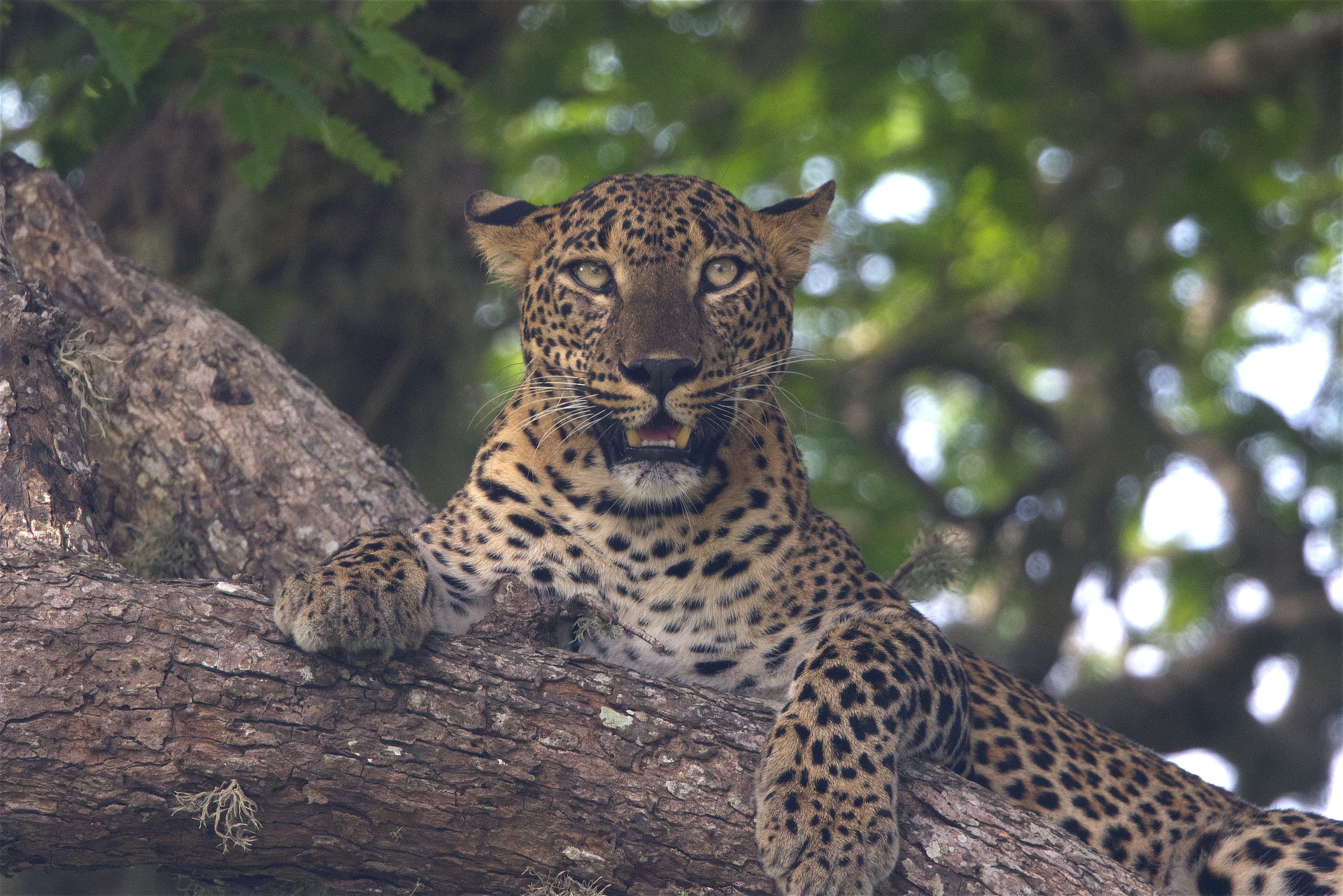
DISCOVER SRI LANKA
- Next tour dates TBD 2025
- Duration 12 days
- Lodging 3-4 stars
- Difficulty Easy – Medium
- Group size Max. 8 people
- Price USD $4,450 per person*
Overview
Sri Lanka is an island paradise, boasting a rich natural heritage, with amazing wildlife and biodiversity. Incredibly, for an island of its size it is home to iconic mega fauna such as leopards, elephants, and sloth bears. The island is also regarded as a biodiversity hotspot and teems with endemic birds such as the Sri Lanka Blue-Magpie, Serendib Scops-Owl, and Red-faced Malkoha, reptiles, amphibians as well as plant species found nowhere else on Earth. With numerous man-made lakes and rivers running through its interior, lush tropical rainforests, mangroves and coastal lagoons, misty highlands laden with waterfalls and dry zone scrub jungles, Sri Lanka comprises of a wide range of picturesque landscapes and natural habitats which can be compared to that of a much larger continent.
Venture into an ancient land with thousands of years of history of ancient cities and a vibrant culture with amazing architectural monuments and incredible feats of engineering which can be linked to the origins of Buddhism in the country with magnificently constructed stupas and the ruined remains of ancient kingdoms. Experience the misty highlands and tea country and have a cup of the world famous Ceylon Tea. The real treasure of Sri Lanka are its people, a rich multi-cultural and multi religious society. The warm hospitality and friendly nature of Sri Lankans will make anyone feel welcome on this Sri Lanka wildlife tour.
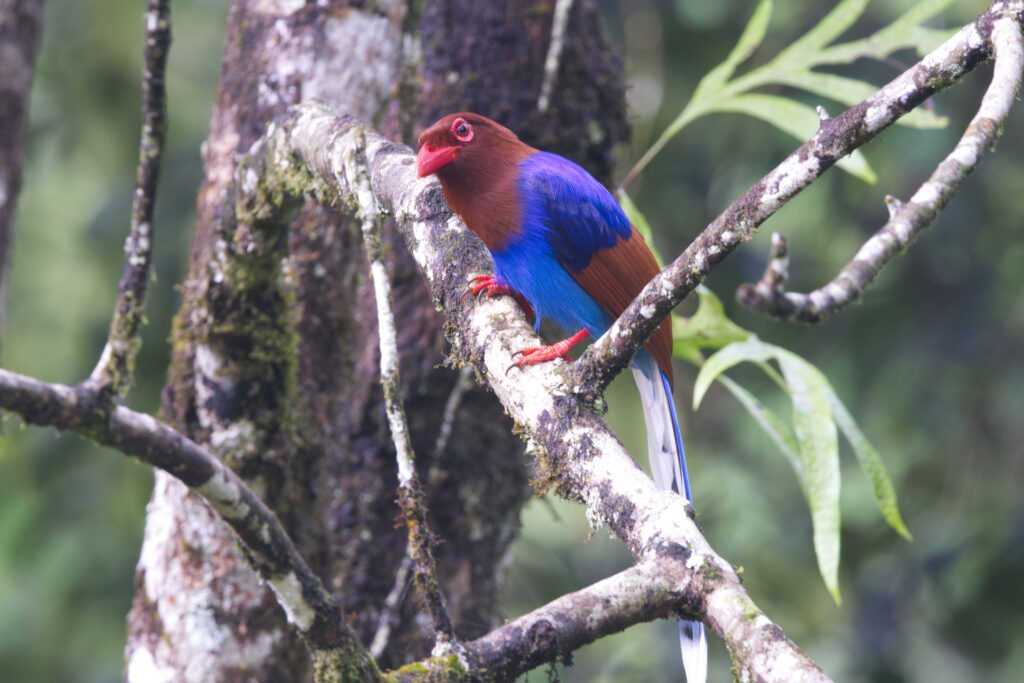
Itinerary
DAY 1: ARRIVAL AND DRIVE TO CLAUGHTON WILD
Welcome to Sri Lanka! Today you will be met at the airport and drive approximately 4 hours to Wilpattu National Park. We will settle into our hotel, and enjoy a delicious lunch. After lunch, we will take a short drive to the Hunuviladama Tank, a man-made reservoir where many locals come to bathe. Here, we may pick up our first endemics, including the picked up 28 more species, including two endemics – the Red-backed Flameback and the Brown-capped Babbler. Malabar Pied-Hornbill, Black-hooded Oriole, Sri Lanka Green-Pigeon, and Stork-billed Kingfisher are all possible to see this afternoon. We also hope to see some local mammals, such as Spotted Deer, Common Ground Squirrel and a Grizzled Giant Squirrel. Back at the lodge, we will enjoy some coffee and tea before dinner and some light birding as the sun begins to set.
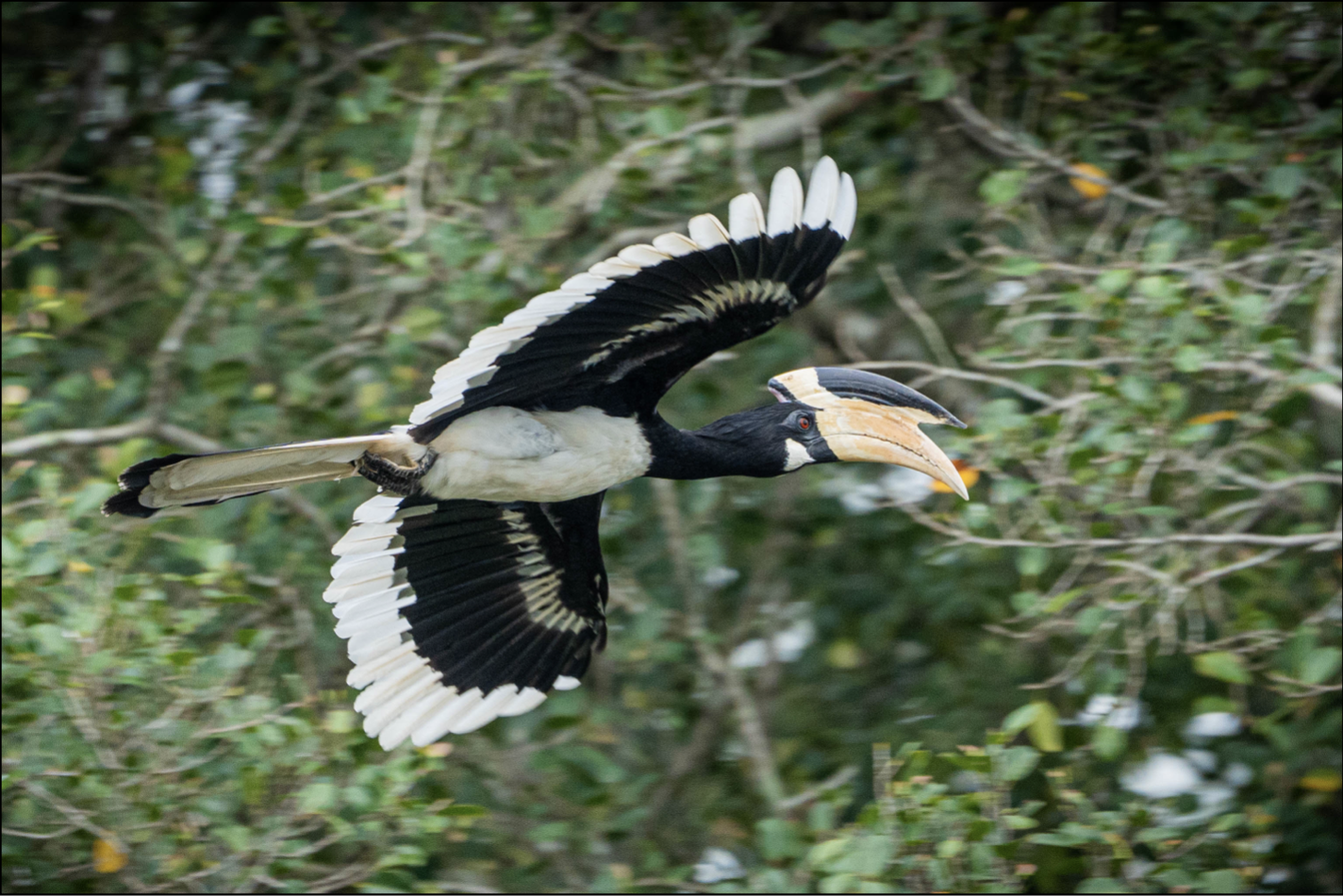
DAYS 2 & 3: WILPATTU NATIONAL PARK
We will spend both of these days with an early morning and set off for a full day game drives in Wilpattu National Park, Sri Lanka’s oldest and largest national park. Wilpattu is one of the top spots in Sri Lanka for spotting Leopard and Sloth Bear. Other larger animals seen regularly here include Elephant, Golden Jackal, Mugger Crocodile, Chital, and Wild Water Buffalo. Wilpattu is also an excellent birding location with over 200 recorded species including a variety of raptors such as Crested Serpent-Eagle, Changeable Hawk-Eagle, White-bellied Sea-Eagle, Brown Fish-Owl; as well as the endemic Sri Lanka Gray Hornbill, Sri Lanka Woodshrike, and a large number of water birds and waders by the water’s edge near the villus. In the evenings, we have the option to head out on night drives again, if we are still seeking small cats and other nocturnal wildlife.
DAY 4: WILPATTU TO HABARANA & NIGHT DRIVE
This morning we will enjoy a final game drive in Wilpattu in search of any birds and mammals we have yet to see here. We will check out and drive to Habarana (approximately 2 hours). We will arrive in the afternoon and spend the rest of the day birding on the lodge property, a good place to find Oriental Pygmy Kingfisher, Orange-breasted Green-Pigeon, Blue-faced Malkoha, Crested Treeswift, Brahminy Kite, Coppersmith Barbet, Small Minivet, Red-backed Flameback, and many others. We also may get a chance to scan the lake for Cotton Pygmy-Goose, Pheasant-tailed Jacana, Asian Openbill, Asian Woolly-necked Stork, Lesser Adjutant, Indian Cormorant, Indian Pond-Heron, and other interesting water birds. After dark we will head out to seek out some nocturnal wildlife, and in particular, Gray Slender Loris, a unique primate found in Sri Lanka. We will also hope to see Jungle Cat, Fishing Cat, and Golden Jackals.
DAY 5: SIGIRIYA, HURULU ECO PARK & NIGHT WALK
This morning we visit the World Heritage Site of Sigiriya – an ancient rock fortress, and perhaps one of Sri Lanka’s most well-known landmarks. While enjoying this fantastic site, we will keep an eye out for the endemic Black-capped Bulbul. Then we will head to the Hurulu Eco Park, and take an afternoon afternoon safari. Our main target here is the Asian Elephant. Birds we can find here include Black Eagle, Brown-capped Pygmy Woodpecker, Yellow-eyed Babbler, White-rumped Munia, among others. After dinner, we will head out on a night walk, in search of Fishing Cat, Indian Giant Flying Squirrel , slender loris, nocturnal birds and other wildlife active after dark.
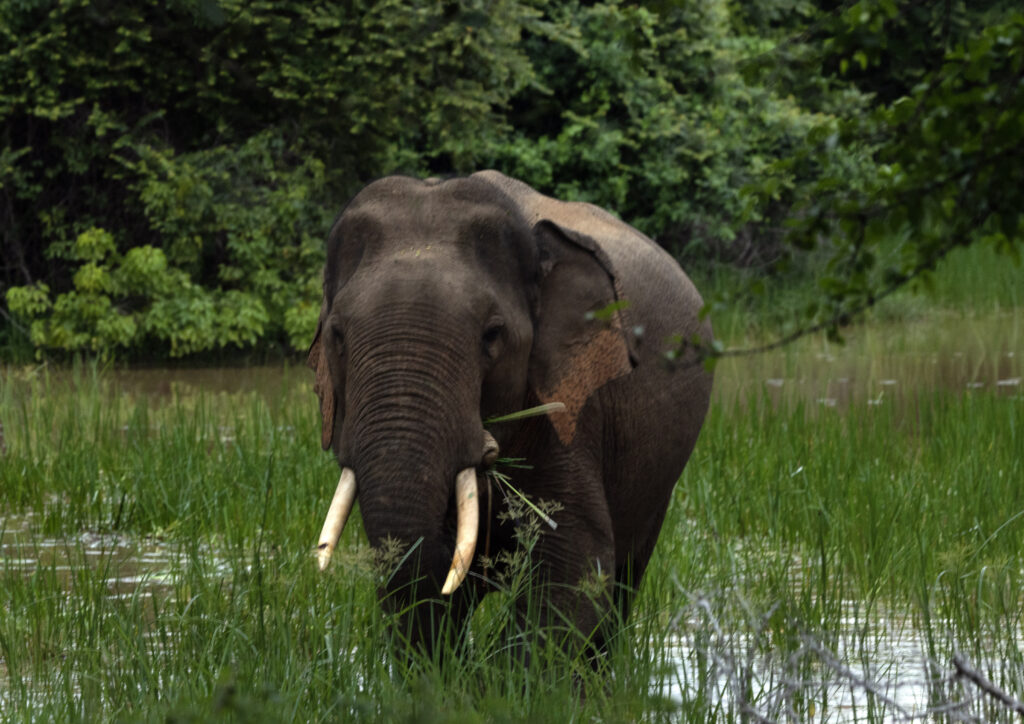
DAY 6: NUWARA ELIYA & VICTORIA PARK
This morning after breakfast we will continue our Sri Lanka wildlife tour with a drive to Nuwara Eliya. Upon arrival and check in, we will spend the remainder of the day exploring the beautiful scenery and parks around the “city on the plain.” A visit to the Victoria Park, which is situated at the center of the town, and is one of the best maintained town parks in South Asia. A leisurely stroll around its beautifully manicured gardens is always a pleasure. It is also one of the best places in the hill country to see some rare species of birds including the Kashmir Flycatcher and the Velvet-fronted Nuthatch, and the endemics Sri Lanka Wood-Pigeon, Sri Lanka Bush Warbler, and Dull-blue Flycatcher. We will also search for Purple-faced Leaf Monkey and Toque Macaque. We will visit Galway’s – a small forest patch, in search of some rare and endemic horned lizards, as well as the elusive Sri Lanka Thrush.
DAY 7: HORTON PLAINS NATIONAL PARK
Today we will have an early morning start to Horton Plains National Park, Sri Lanka’s highest elevation national park. The park lies approximately 2,100 meters above sea level and comprises of cloud forests and open grassland and UNESCO World Heritage Site. A variety of highland bird species including the endemics Sri Lanka White-eye, Dull-blue Flycatcher, and Yellow-eared Bulbul are found here and can be seen close to the entrance. Horton Plains is one of the few known locations where elusive highland endemics such as the ‘Arrenga’ or Sri Lanka Whistling-Thrush and Sri Lanka Bush Warbler can be observed. Sambar deer are frequently encountered, while the shaggy coated ‘Bear Monkey’ (highland race of the Purple-faced Leaf Monkey) is occasionally seen within the forested areas. We will also look for the two endemic species of lizards found exclusively in this ecosystem, the Rhino Horned Lizard and the tiny Pygmy Lizard. If we are very lucky we might catch a quick glimpse of the elusive leopard, which is much larger and has a thicker coat than its lowland counterparts. After our time spent in Horton Plains, we will continue to seek out any endemics and other species of interest in Nuwara Eliya.
DAYS 8 & 9: SINHARAJA NATIONAL PARK
After breakfast we will check out and drive to Sinharaja, and explore the Sinharaja National Park and its amazing ecosystem. The largest tract of natural rainforest in Sri Lanka, the Sinharaja Forest Reserve contains a wide variety of endemic flora and fauna, where 28 of Sri Lanka’s 34 endemic species have been recorded including the recently discovered Serendib Scops-Owl and other rarities such as the Sri Lanka Thrush, Sri Lanka Spurfowl, Chestnut-backed Owlet, and White-faced Starling. We will watch for mixed feeding flocks in the forest canopy, among the most studied and largest in the world! Other species of fauna encountered during a rainforest walk here include Purple-faced Leaf Monkey, Giant Squirrel, Kangaroo Lizard, Hump-nosed Lizard, and Sri Lanka Keelback. After dark head we can head out for a few hours in search of some owls and other nocturnal wildlife, and hope to encounter Brown Wood-Owl, Spot-bellied Eagle-Owl, and Sri Lanka Bay-Owl.
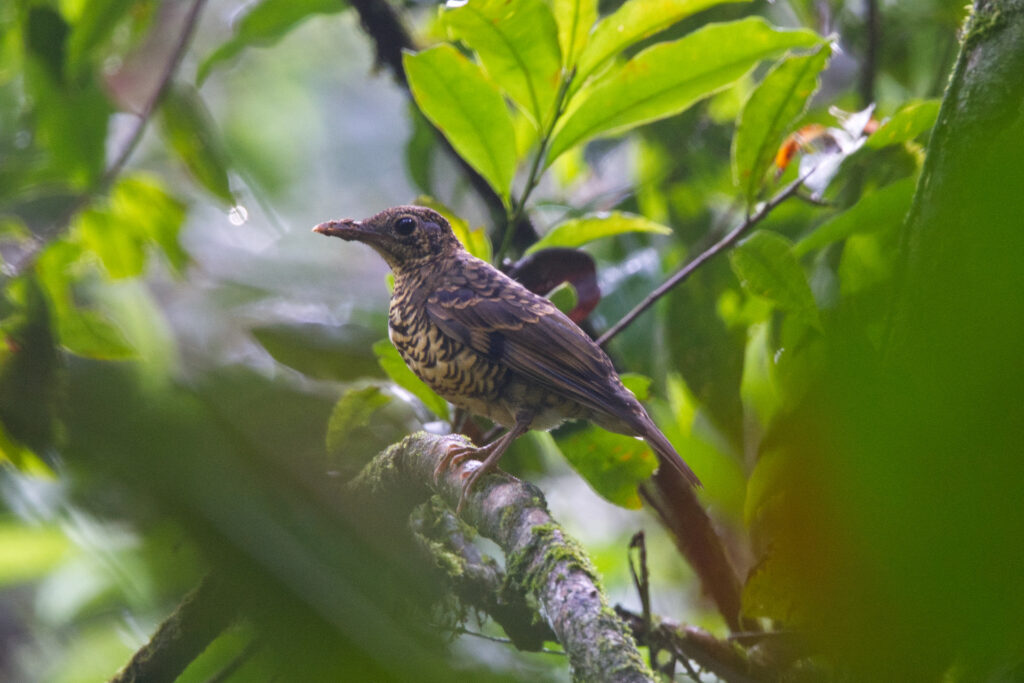
DAY 10: YALA NATIONAL PARK
This morning after breakfast we will check out and head east from Sinharaja to the Southern lowlands of Yala National Park. This afternoon we will head towards the Tissa Wetlands and Deberawawa area, where will focus on finding some resident owls in the area such as the Jungle Owlet, Brown Fish-Owl, Indian Scops-Owl, Barn Owl, and Brown Wood-Owl. Also in the wetlands, you might encounter Watercock, Pheasant-tailed Jacana, Yellow, Black, and Cinnamon bitterns, and many others.
One of the biggest highlights comes at dusk, when tens of thousands of Indian Flying Fox leave their daytime roost from the massive trees along the lake. This is an impressive wildlife spectacle which occurs every evening. Furthermore, with the bats leaving their roost thousands of Little, Intermediate, and Great egrets fly into these trees for their nighttime roost.
DAY 11: YALA NATIONAL PARK SAFARI
Today we will enjoy a full-day game drive in Yala National Park. Yala’s star attraction is undoubtedly the Sri Lankan Leopard. It is also one of the few places in the country where the endangered shaggy-coated Sloth Bear can be seen. Asian Elephants are also encountered, as well as Golden Jackal, Sambar, Chital, Wild Water Buffalo, Wild Boar, and the Tufted Gray Langur are among the other larger mammals. During the dry season, from June to September, large concentrations of Mugger Crocodiles are can be seen in the dwindling waterholes. Yala is also an excellent birding destination with close to 300 avian species recorded; Indian Peafowl and Sri Lanka Junglefowl, Changeable Hawk-Eagle, Painted Stork, Malabar Pied-Hornbill, Chestnut, Asian Green, and Blue-tailed bee-eaters are among the species seen regularly. We will enjoy a final dinner together and share our favorite sightings of the trip.
DAY 12: DEPARTURE
After breakfast, we will start our journey back to Colombo, where we will be dropped off at the airport to catch our return flights home. Our Sri Lanka wildlife tour concludes in Colombo.
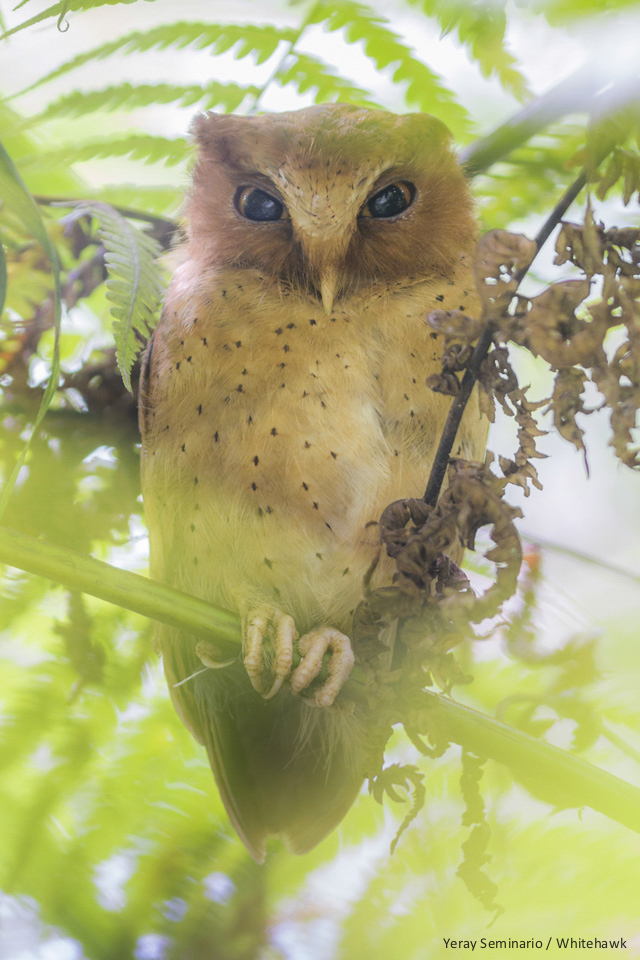
Species
BIRDS
- Indian Peafowl
- Sri Lanka Spurfowl
- Sri Lanka Junglefowl
- Sri Lanka Green-Pigeon
- Sirkeer Malkoha
- Blue-faced Malkoha
- Sri Lanka Frogmouth
- Crested Treeswift
- Asian Openbill
- Asian Woolly-necked Stork
- Painted Stork
- Spot-billed Pelican
- Crested Serpent-Eagle
- White-bellied Sea-Eagle
- Gray-headed Fish-Eagle
- Serendib Scops-Owl
- Sri Lanka Bay-Owl
- Brown Boobook
- Brown Fish-Owl
- Sri Lanka Gray Hornbill
- Malabar Pied-Hornbill
- Black-backed Dwarf-Kingfisher
- White-throated Kingfisher
- Black-capped Kingfisher
- Asian Green Bee-eater
- Blue-tailed Bee-eater
- Indian Roller
- Crimson-fronted Barbet
- Coppersmith Barbet
- Yellow-fronted Barbet
- Brown-capped Pygmy Woodpecker
- Black-rumped Flameback
- Red-backed Flameback
- Rose-ringed Parakeet
- Sri Lanka Hanging-Parrot
- Sri Lanka Woodshrike
- Sri Lanka Blue-Magpie
- Sri Lanka Swallow
- Yellow-browed Bulbul
- Sri Lanka White-eye
- Sri Lanka Scimitar-Babbler
- Sri Lanka Thrush
- Pale-billed Flowerpecker
- Purple-rumped Sunbird
- Tricolored Munia
MAMMALS & OTHER WILDLIFE
- Sri Lanka Leopard
- Asian Elephant
- Fishing Cat
- Jungle Cat
- Rusty-spotted Cat
- Indian Flying Fox
- Gray Slender Loris
- Sloth Bear
- Purple-faced Langur
- Ruddy Mongoose
- Indian Giant Flying Squirrel
- Grizzled Giant Squirrel
- Golden Jackal
- Sambar
- Spotted Deer
- Rhino Horned Lizard
- Pygmy Lizard
- Star Tortoise
- Paddyfield Frog
- Rohans’ Globular Frog
TOUR BASICS
Guide: Yeray Seminario
Single Supplement: US$650
Lodging: Comfortable hotels and nature resorts
Food: Fresh, traditional cuisine
Weather: Wide range of temperatures as we move through different elevations
Difficulty: Easy to medium. Most birding is done on main roads, but trails may have uneven conditions. Some safaris require long days in vehicles.
* Pricing is based on a minimum of 8 participants. With smaller groups, an additional fee will be charged.
LEARN MORE
Upcoming tour dates:
TBD 2025
Past trip reports:
2023 Sri Lanka Trip Report
2023 Sri Lanka eBird Trip Report
From our blog:
Hornbills & Toucans: A Tale of Convergent Evolution
